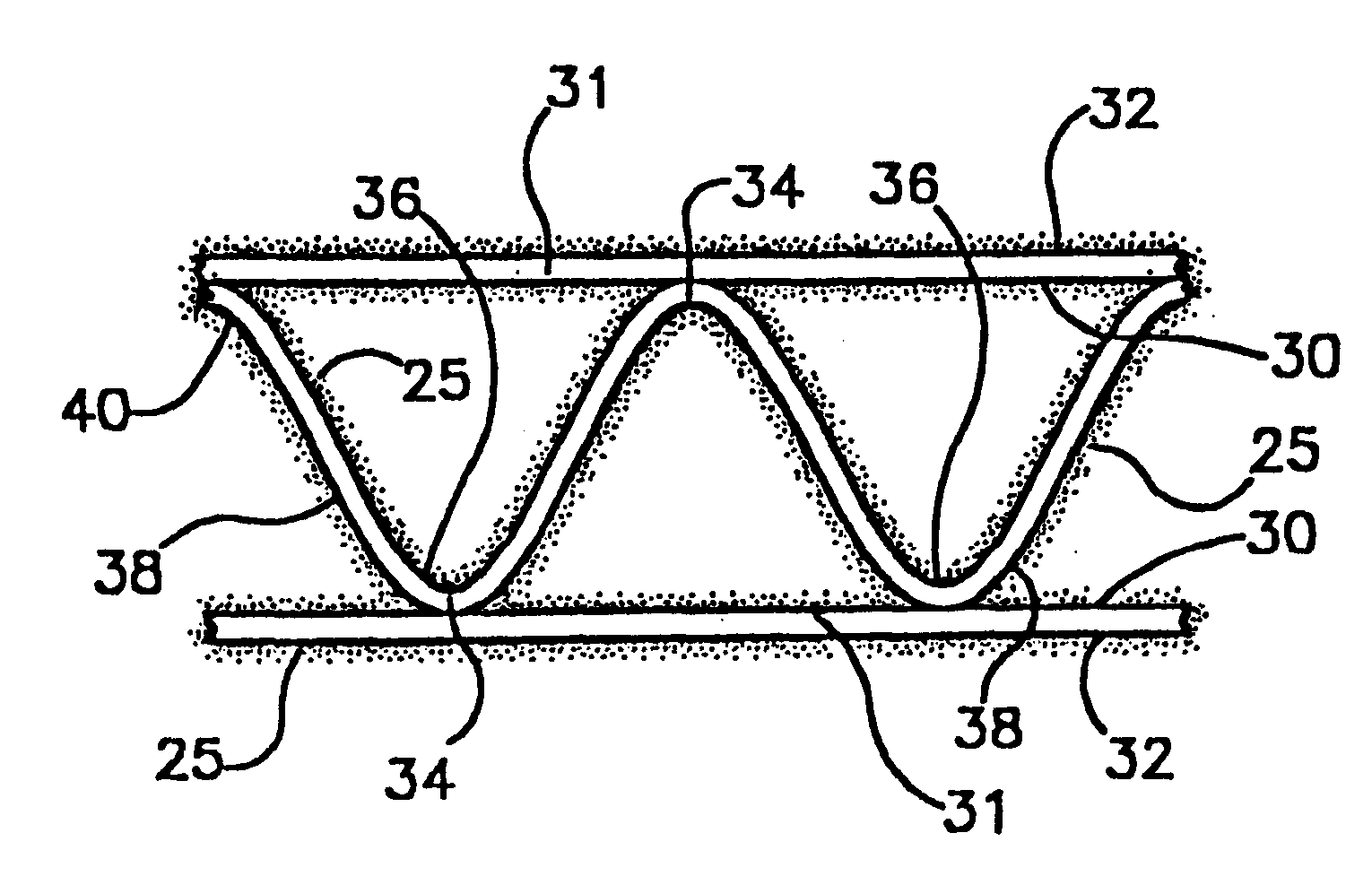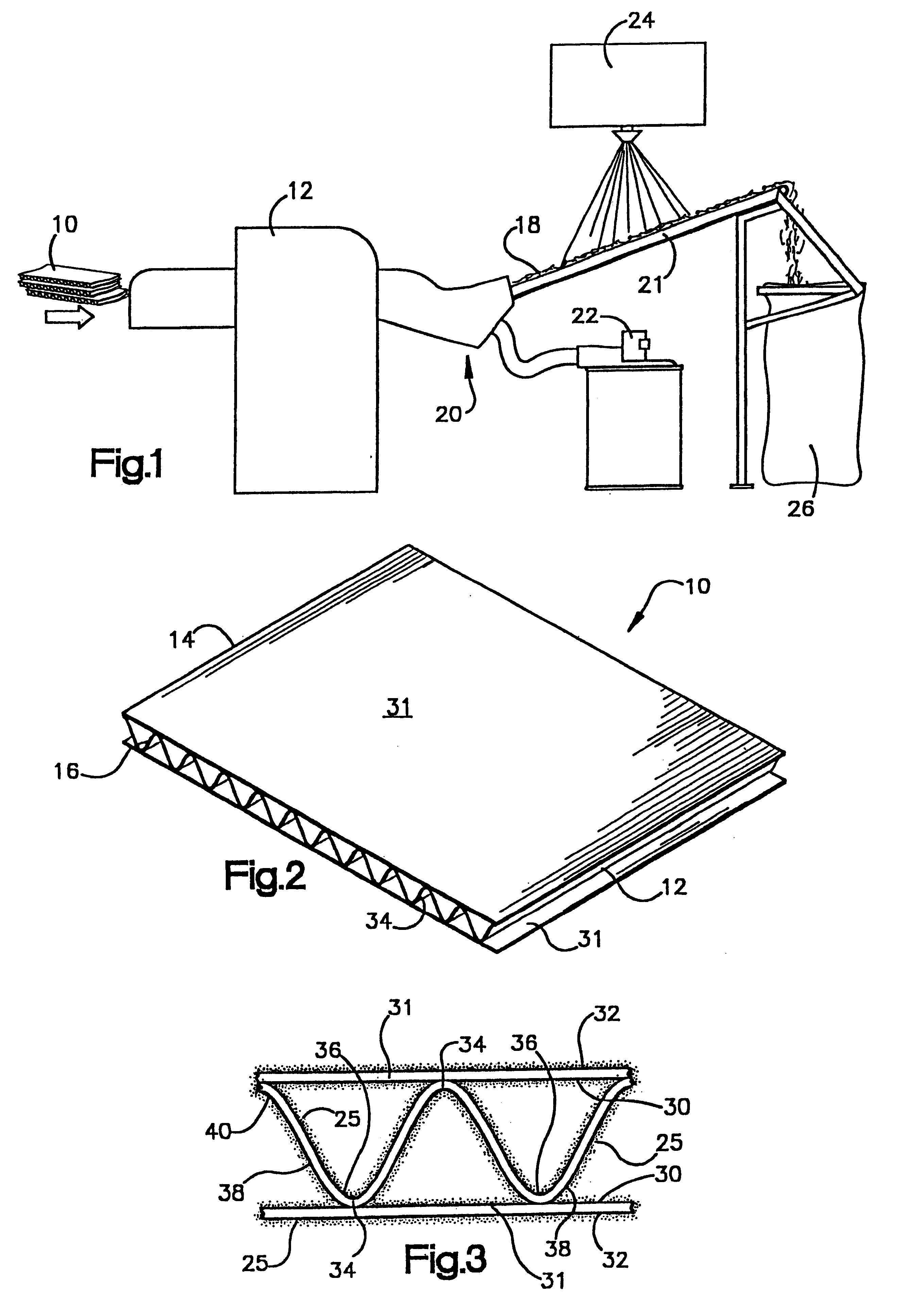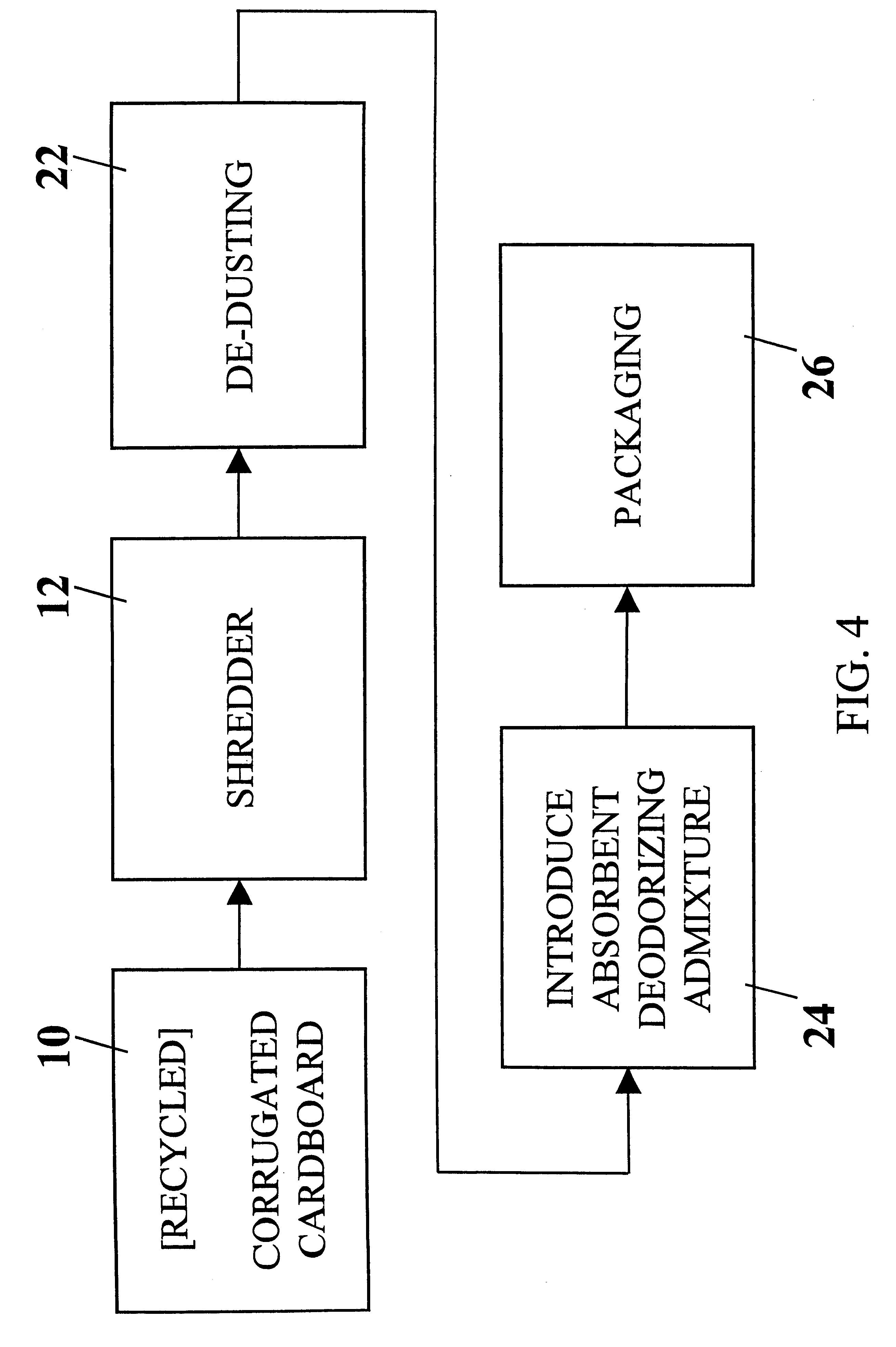Absorbent, deodorizing, hygienic animal bedding composition and method of manufacture
a technology of hygienic animal bedding and composition, which is applied in the direction of biocide, products, separation processes, etc., can solve the problems of insufficient cushioning, poor absorbency of straw and hay, and slipperyness, and achieves reduced unpleasant odor, reduced cost, and reduced odor
- Summary
- Abstract
- Description
- Claims
- Application Information
AI Technical Summary
Benefits of technology
Problems solved by technology
Method used
Image
Examples
Embodiment Construction
Referring to FIGS. 1 through 4, an animal bedding composition and a method of making the animal bedding composition of the present invention is illustrated. A sheet of corrugated cardboard material 10 is provided. As shown in FIG. 2, the sheet of cardboard is comprised of a first edge 12, a second edge 14, and a plurality of corrugations 16. The corrugations 16 are generally parallel to the first edge 12 and the second edge 14 and extend the length of the sheet of corrugated cardboard 10. The cardboard 10 may be new or recycled stock of two panel sandwiched corrugations ranging in total thickness from approximately 1 / 16" to 1 / 2". The outer panels are preferably kraft paper (a tough paper made from sulfate wood pulp) or other fibrous cellulosic material ranging in thickness from approximately 1 / 32" to approximately 1 / 8". The internal corrugated layer, known as fluting, is also preferably made of kraft paper or other fibrous, cellulosic material with a flute height, as measured from o...
PUM
| Property | Measurement | Unit |
|---|---|---|
| width | aaaaa | aaaaa |
| width | aaaaa | aaaaa |
| length | aaaaa | aaaaa |
Abstract
Description
Claims
Application Information
 Login to View More
Login to View More - R&D
- Intellectual Property
- Life Sciences
- Materials
- Tech Scout
- Unparalleled Data Quality
- Higher Quality Content
- 60% Fewer Hallucinations
Browse by: Latest US Patents, China's latest patents, Technical Efficacy Thesaurus, Application Domain, Technology Topic, Popular Technical Reports.
© 2025 PatSnap. All rights reserved.Legal|Privacy policy|Modern Slavery Act Transparency Statement|Sitemap|About US| Contact US: help@patsnap.com



